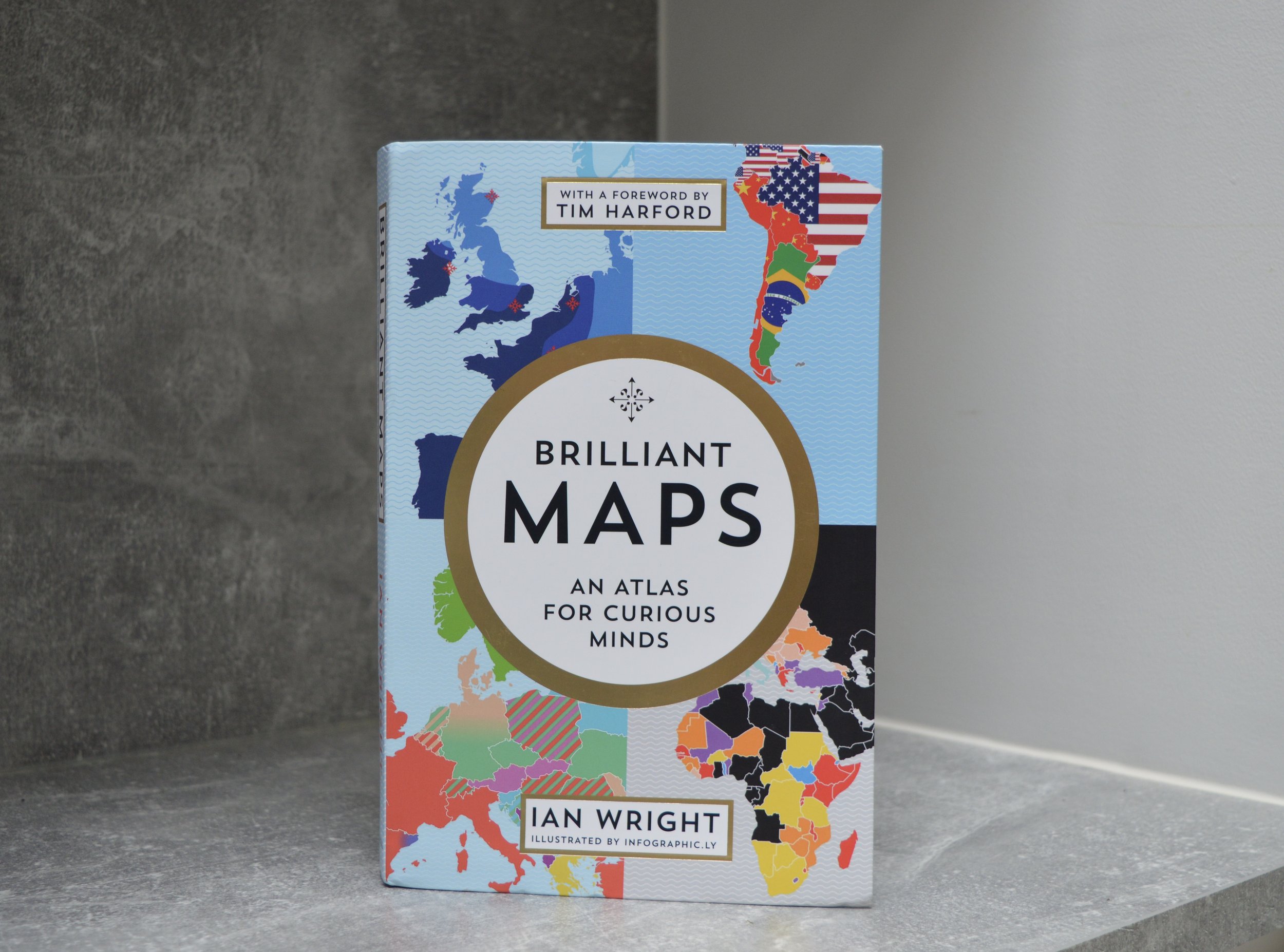Brilliant Maps
November 2022
Overall Verdict: ★ ★ ★
To buy this book, click here.
Why this book?
Received as a birthday gift, I couldn’t wait to place this book on the coffee table and dip in and out of it at leisure. Similarly to the previously reviewed ‘London The Information Capital’, this is a well-curated collection of maps in one beautifully laid out book. Written by Ian Wright, author of the Brilliant Maps website (and associated Twitter account), this book is a celebration of the power and intrigue of maps. From the familiar to the new, the collection of 100 maps in this book will give you plenty to consider- whilst also teaching you something new along the way!
For students:
If you’ve ever found yourself looking at a map and studying it, this is the book for you. Divided into categories including power, culture, customs, friends and enemies, and national identity, this is an all-compassing collection of maps that probably covers 99% of the A-Level geography course!
If you’re considering an EPQ or extended essay project, this book could provide plenty of ideas of topics to explore further. It’s also worth looking at the website and Twitter accounts for even more curious maps.
For teachers:
Many of these maps are useful to include into lesson and teaching resources- particularly if you teach the human topics of A-Level Geography like I do. Whether you want to use a specific map as an introduction to the topic and discuss it in depth or simply to find resources to improve the data literacy of students, you’ll find something for each topic in the book.
Perhaps the top 3 most useful as resources are:
The astounding drop in global fertility rates between 1970 and 2015 (p.11)
Open borders of the world (p.98)
Travel times from London in 1914 compared to travel times in London in 2016 (p.130-133)
Some would make excellent starters to shock, intrigue or engage:
Countries with economies bigger than California’s (spoiler alert: 3!) (p.38)
Colonial Africa on the eve of World War 1 (p.141)
The 22 regional languages of India (p.170)
To buy this book, click here.
